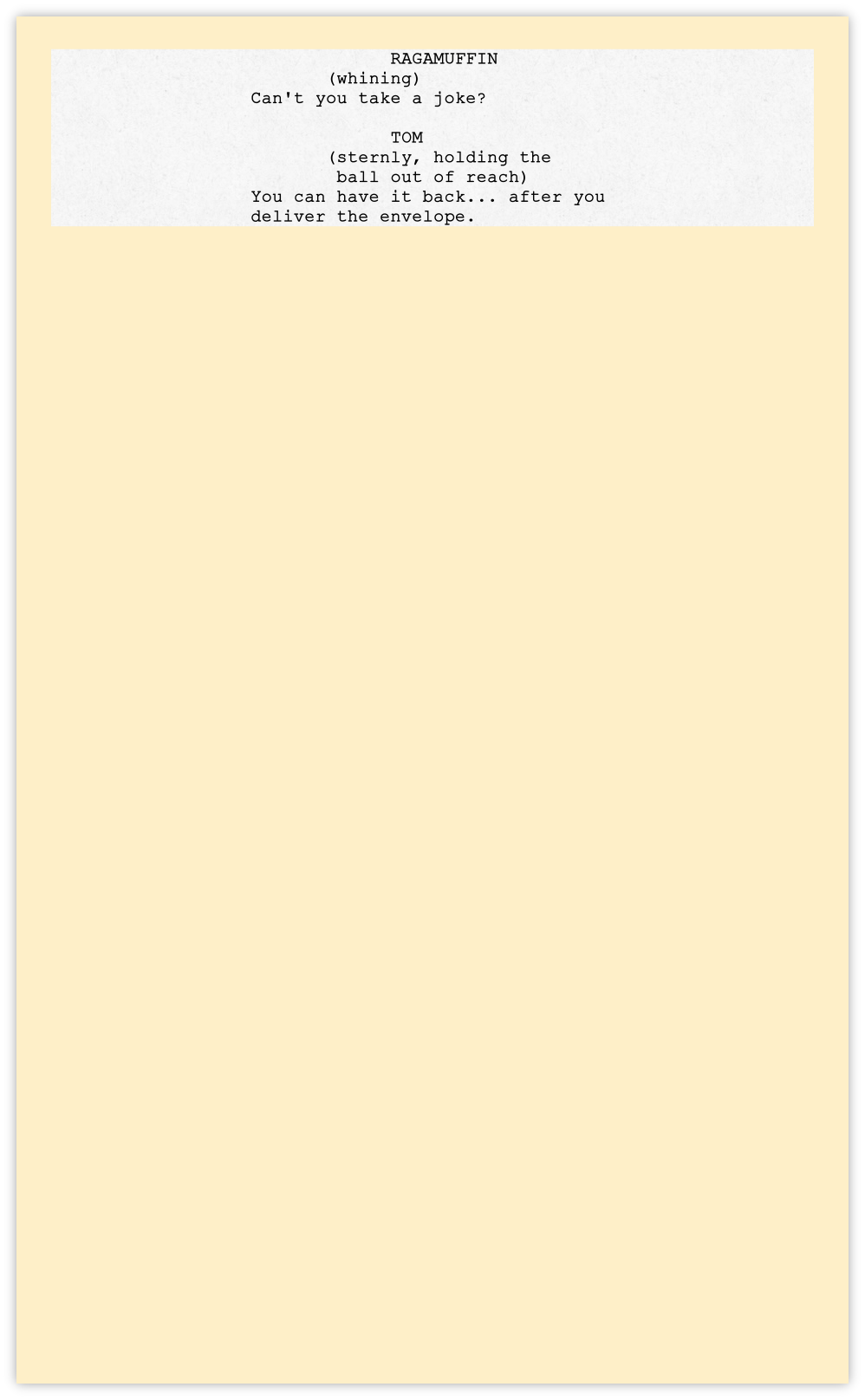

For more information: Recommended Links | Frequently Asked Questions
Copyright © 2018 by Michael Ray Brown. All rights reserved.
“First rate analysis at a cut-rate price.”
— Creative Screenwriting



Script Format: Personal Direction
Personal direction (also called “parentheticals” or “wrylies”) should be used sparingly. It may be intrusive for a writer to suggest how an actor should play a line. Indeed, some vagueness may even be preferable, as it gives the actor and director some latitude to interpret the emotional subtext. That being said, personal direction is sometimes necessary to clarify the character’s intent.
It’s also acceptable to place the word “CONT’D” in parentheses as an extension to the character cue, but things can get messy if there’s already a “V.O.” or “O.S.” extension. Most screenwriting software can be configured to handle this automatically.
Use a parenthetical beat, not just an ellipsis, to indicate hesitation or an adjustment in a speech. Personally, this reader prefers the use of “(then)” instead of “(beat),” as it flows better and cues the actor that this is an adjustment. Do not use “(pause).”
Song lyrics in dialogue should appear in quotes under the personal direction “(sings).”
If some personal direction interrupts a line of dialogue, then the unfinished line should trail off in an ellipsis. The line should pick up after the parenthetical with an ellipsis, as well:


Personal direction should be treated as a separate element, placed on a line all to itself. As with all screenplay elements, personal direction should not be centered on the page. Instead, it should appear in its own margins, approximately halfway between the margins for dialogue and the margins for character cues. The standard setting puts the left parenthesis 3.6 inches from the left of the page. The text should wrap under the text, not under the parenthesis:

Personal direction should be short, no more than a few words, and not a complete sentence. As such, it should not have the first word capitalized (unless it’s a proper name), nor should it end in a period. If the direction is long enough to merit a complete sentence, then it should appear as an action element.
Personal direction must apply only to the character who is speaking. If it gives direction to other characters, then it must be broken out as an action element. However, another character’s reaction can be incorporated into some personal direction if the speaking character is responding to it:

Use personal direction to indicate a speech is continuing. When the same character speaks again in the same scene following some action, add the personal direction “continuing” on the next line after the cue:

Under no circumstances should ALL CAPS be used in personal direction.
Personal direction always comes before a speech, never after. If a character performs some action at the end of their speech, for example, it should be formatted as an action element, not as personal direction.
 Next: Transitions
Next: Transitions
| Development Notes |
| Oral Consultation |
| Studio-style Coverage |
| Selling Synopsis |
| Proofreading |
| Sample Script Analysis |
| Sample Coverage |
| Sample Selling Synopsis |
| SolPix Interview |
| Creative Screenwriting Interview |
| Scriptwriter Interview #1 |
| Scriptwriter Interview #2 |
| Scriptwriter Interview #3 |
| Scriptwriter Interview #4 |
| Elements of a Great Script |
| Margin Settings |
| Scene Headings |
| Slug Lines |
| Description |
| Character Cues |
| Dialogue |
| Personal Direction |
| Transitions |
| Flashbacks |
| Montages |
| Telephone Calls |
| Registration |
| Software |